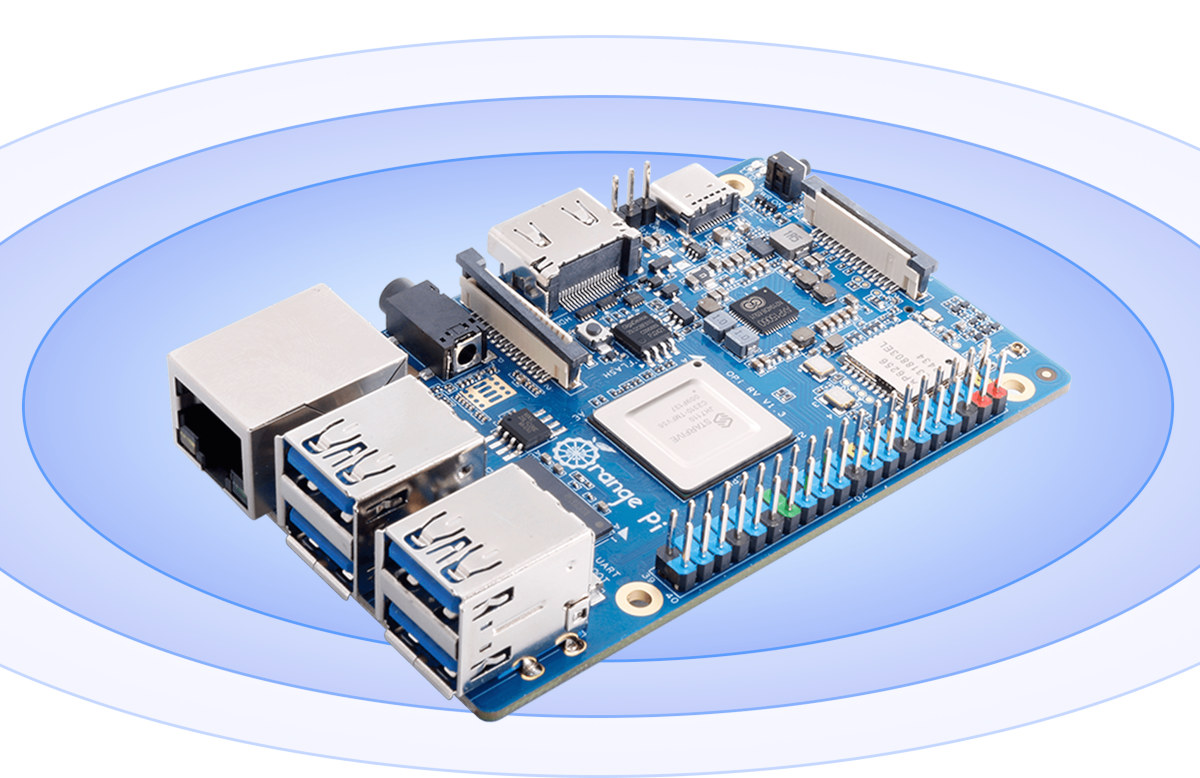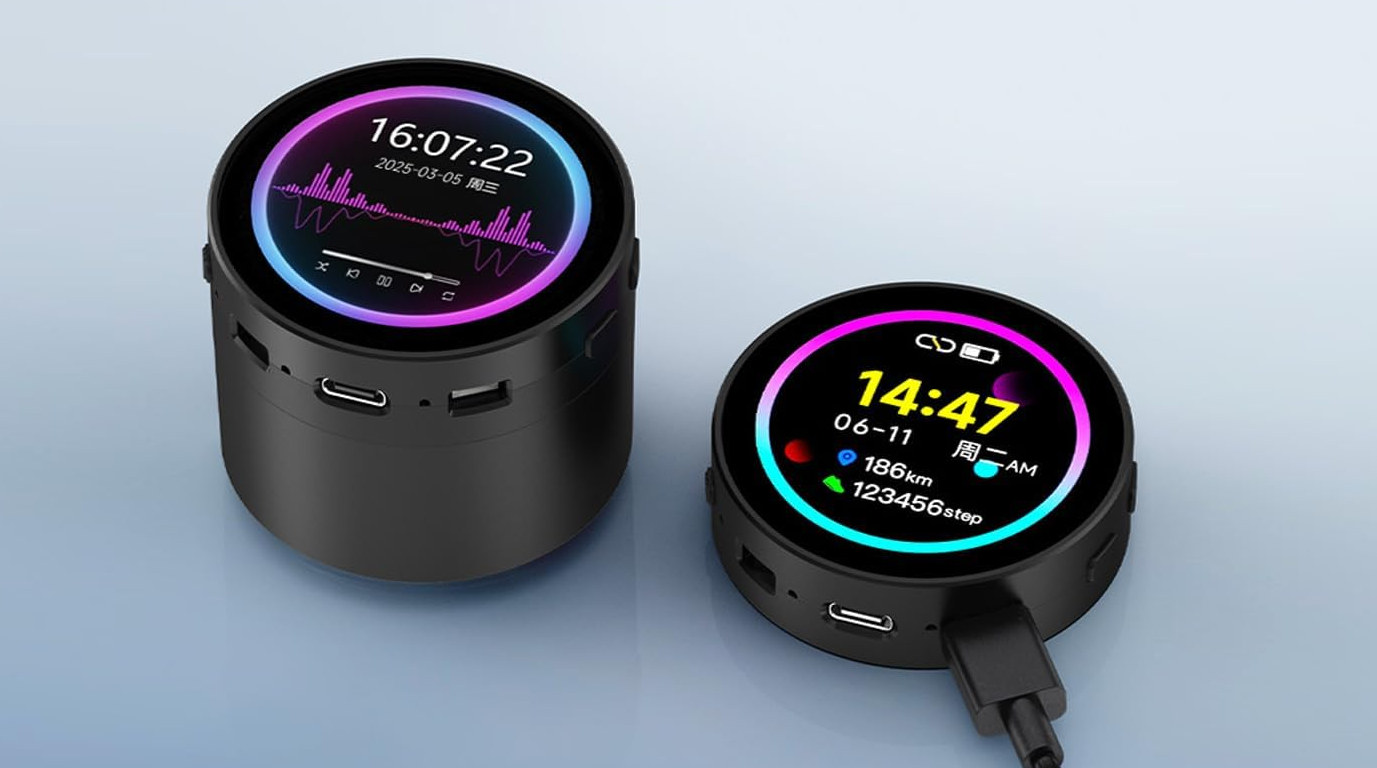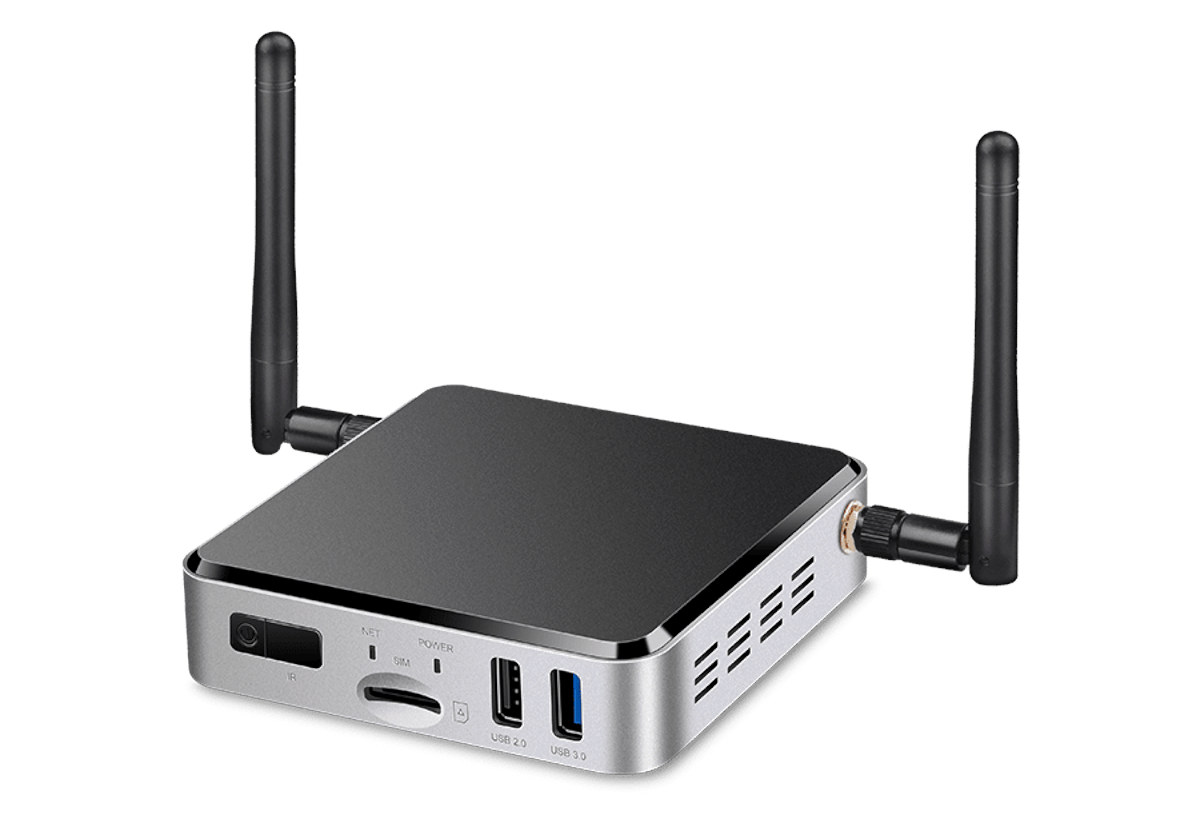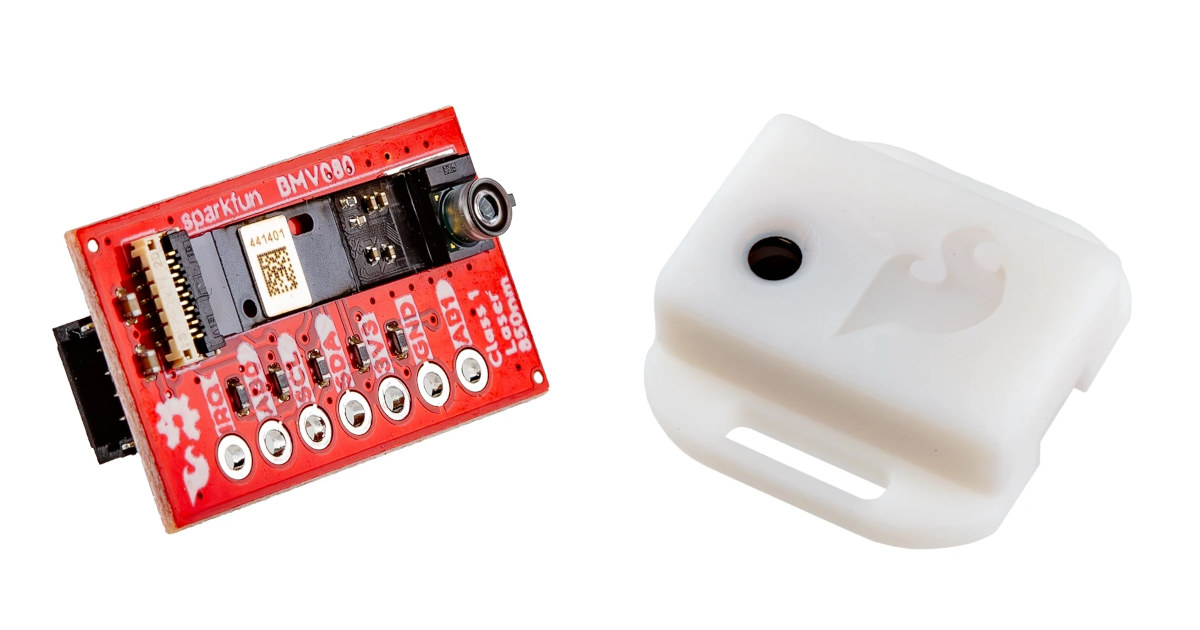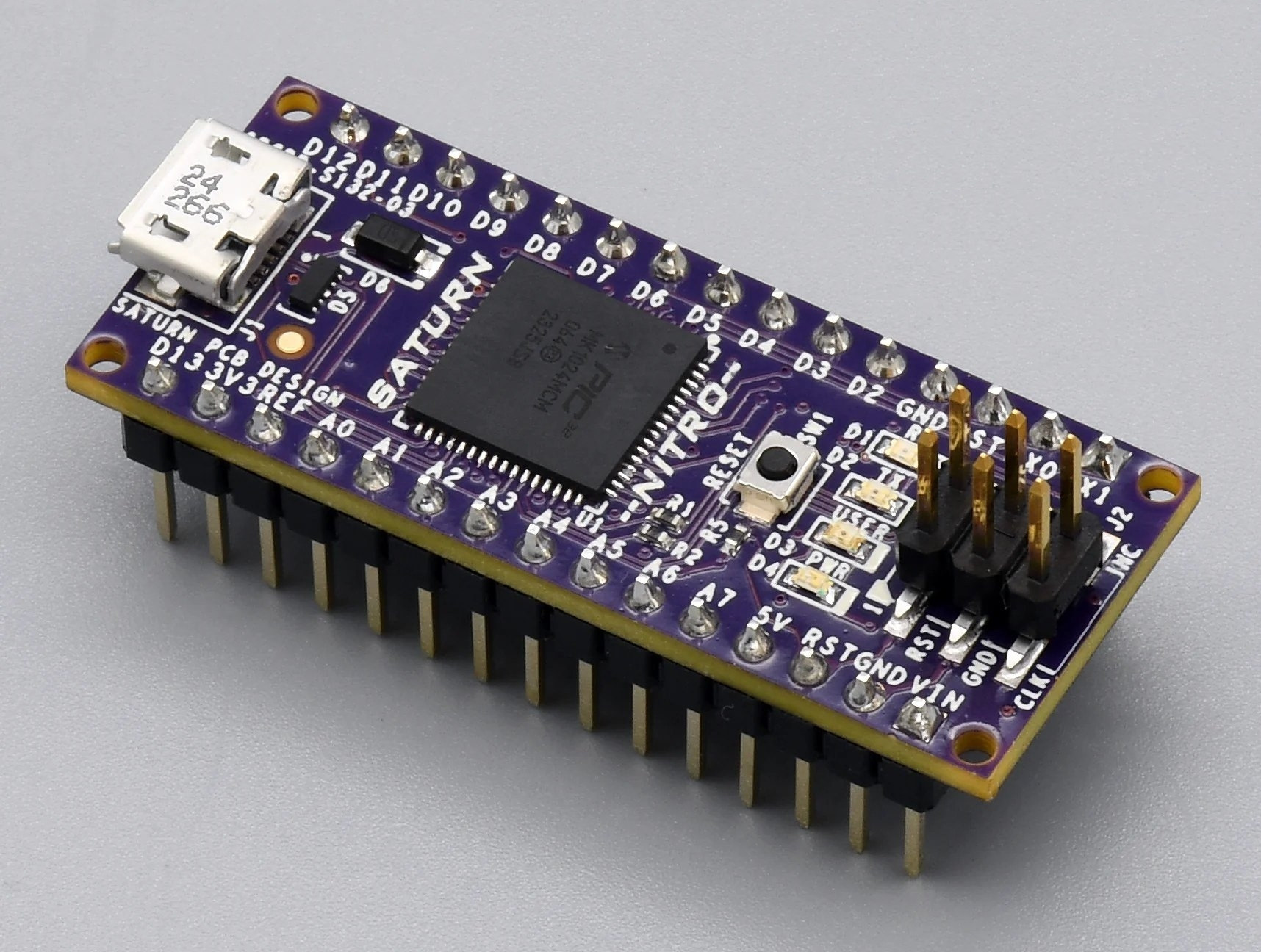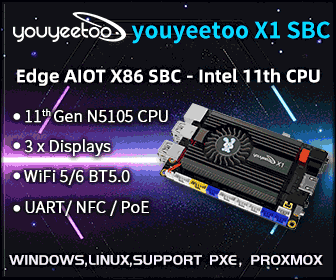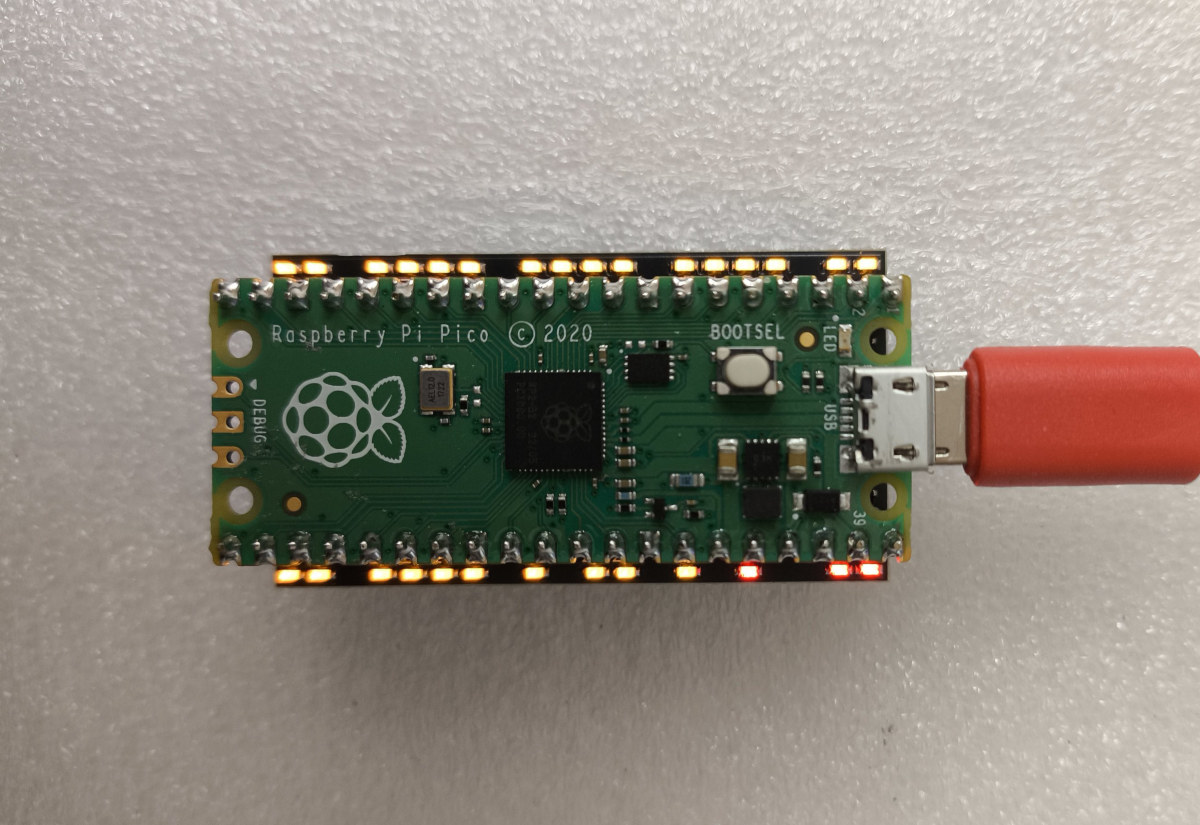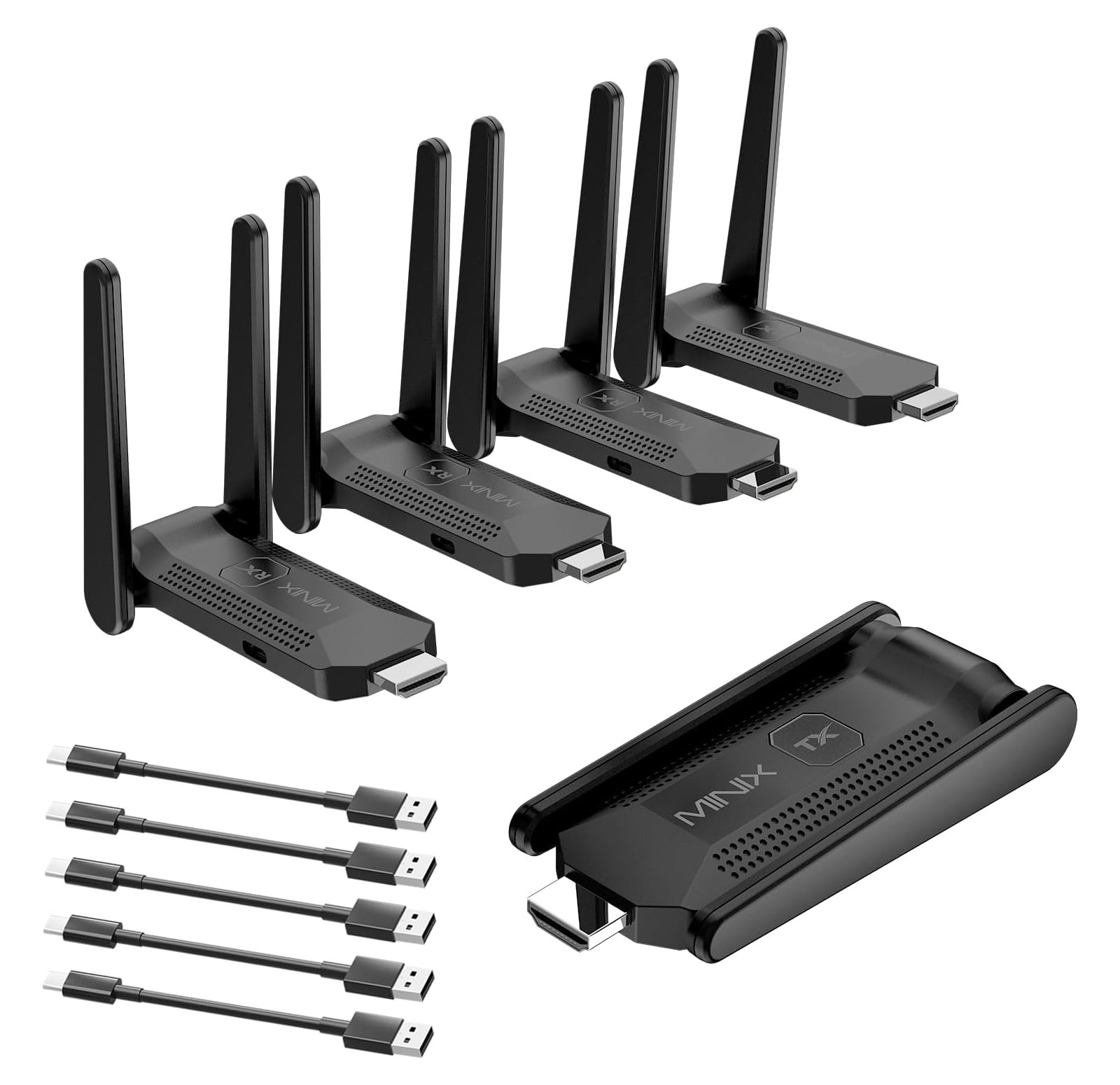The Orange Pi RV SBC powered by a StarFive JH7110 RISC-V SoC was first introduced at the Orange Pi Development Conference 2024, a little over one year ago. But somehow, the company first launched the Orange Pi RV2 SBC based on Ky X1 SoC (rebranded Spacemit K1) earlier this month, and has only started taking orders for the Orange Pi RV board. The credit card-sized SBC ships with 2GB to 8GB RAM, supports M.2 NVMe SSD storage, provides gigabit Ethernet, built-in WiFi 5 and Bluetooth 5.0, four USB 3.0 ports, HDMI and MIPI DSI video interface, a MIPI CSI camera interface, a 40-pin GPIO header, and more. Orange Pi RV specifications: SoC – StarFive JH7110 CPU – Quad-core RISC-V processor (RV64GC) at 1.5 GHz GPU – Imagination BXE-4-32 GPU with support for OpenCL 1.2, OpenGL ES 3.2, Vulkan 1.2 VPU H.264 & H.265 4Kp60 decoding H.265 1080p30 encoding JPEG encoder / […]
ESP32-S3 Smart Audio devkit integrates 1.8-inch round touch LCD, microphone, optional battery and speaker box
Waveshare ESP32-S3-Touch-LCD-1.85C is an ESP32-S3 development kit with a 1.85-inch round touchscreen display with 360×360 resolution, support for Wi-Fi & Bluetooth BLE 5, and a built-in microphone. There’s also the ESP32-S3-Touch-LCD-1.85C-BOX with the same specifications, but an additional box with a speaker and a 3.7V battery. Both versions come with 16MB SPI flash, a microSD card slot, a USB-C port, a few buttons, GPIO and I2C expansion headers, and can be used as music players, smart speakers, HMI solutions, etc… It’s not quite the first ESP32-S3 audio + display devkit we’ve covered, as Waveshare introduced the ESP32-S3-Touch-AMOLED-1.8 earlier this year with a squared AMOLED display, and Wireless Tag launched the ESP32 Agent Dev Kit to interface with LLMs. ESP32-S3-Touch-LCD-1.85C specifications: SoC – Espressif ESP32-S3R8 CPU – Dual-core Tensilica LX7 microcontroller up to 240 MHz with vector instructions for AI acceleration Memory – 8MB PSRAM Wireless – WiFi 4 and Bluetooth […]
Geniatech APC680 Edge AI and TV Box is powered by Synaptics VS680 AI SoC with 7.9 TOPS NPU
Geniatech APC680 is described as an “AI-powered TV box” powered by Synaptics VS680 quad-core Cortex-A73 SoC with a built-in 7.9 TOPS NPU and designed for smart entertainment and edge computing. The system comes with 4GB RAM and 16GB eMMC flash by default, 4K capable HDMI output and input ports, gigabit Ethernet, WiFi 5 and Bluetooth 5.0, a few USB ports, and a range of wireless options including 4G LTE, Zigbee, Z-Wave, and LoRa. Besides being just an AI-powered TV box, it could also be used as a Smart Home gateway in more ways than one. Geniatech APC680 specifications: SoC – Synaptics VS680 CPU – Quad-Core Arm Cortex-A73 processor GPU – Imagination PowerVR Series9XE GE9920 with support for OpenGL ES 3.2, OpenCL 1.2, Vulkan 1.1, and DirectFB VPU Up to 2160p60 decode with AV1, H.265, H.264, VP9, VP8, and MPEG-2 Up to 1080p60 encode with H.264, VP8 NPU – 7.9 TOPS with […]
SparkFun Air Quality PM1/PM2.5/PM10 Sensor features Bosch’s BMV080, the world’s smallest particulate matter sensor
SparkFun’s “Air Quality PM1/PM2.5/PM10 Sensor – BMV080 (Qwiic)” is breakout board for the Bosch Sensortec BMV080 particulate matter sensor which the German company claims is the world’s smallest and 450 times smaller in volume than any comparable device on the market. It’s summer in Thailand right now, and besides scorching temperatures of over 40°C during the day, it’s also smog season with high PM 2.5 values and frequent alerts not to exercise outdoors. We usually get the Air Quality Index (AQI) from apps like IQAir AirVisual, or people can install air quality monitors in fixed locations to get local readings. But the small size (4.4 x 3.0 x 20 mm³) of the Bosch BMV080 can enable PM2.5 monitoring in wearables or other small devices like the PurpleAir PIXEL USB dongle. SparkFun Air Quality PM1/PM2.5/PM10 Sensor – BMV080 (Qwiic) specifications: Sensor – Bosch Sensortec BMV080 PM Mass Concentration Range: 0 to […]
Radxa Orion O6 Preview – Part 2: Debian 12 – What works, what doesn’t
I went through an unboxing and Debian 12 installation on the Radxa Orion O6 at the end of January, but decided to work on other reviews since software support still needed to be worked on. Since then, there’s been some work done, but no new image released. After waiting for almost two months, I’ve decided to carry on with the review by testing the Debian 12 image in a way similar to the Rock 5B SBC preview I did with Debian 11 in 2022 to check what works and what doesn’t on the Orion O6 at the time of the review. That will involve testing all ports, including 5GbE networking and the PCIe slot with an (old) NVIDIA graphics card, running some benchmarks, and also trying the Debian 12 image with a self-built Linux 6.13 kernel using ACPI instead of UEFI for the default image. Orion O6 SBC benchmarks on […]
SATURN NITRO – A Microchip PIC32MK development board with Arduino Nano form factor
While Microchip regularly releases PIC32 microcontrollers and evaluation kits, we don’t see that many PIC32 development boards from third parties. The SATURN NITRO is an exception, and the Arduino Nano-inspired development board is equipped with a 120 MHz PIC32MK general-purpose and motor control 32-bit MIPS microcontroller with 256KB SRAM, 1024KB flash, and 4KB EEPROM. The board closely follows the design of the official Arduino Nano board and can be seen as a beefed-up version with a much more powerful microcontroller delivering 198 DMIPS compared to the Microchip ATmega328P 8-bit microcontroller @ 16 MHz with just 2KB SRAM, 32 KB flash, and 1KB EEPROM, and a less capable I/Os. SATURN NITRO specifications: MCU – Microchip PIC32MK1024MCM064 Core – MIPS32 microAptiv MCU core @ 120 MHz with FPU; up to 198 DMIPS Memory – 256 KB SRAM Storage – 1MB flash, 4KB EEPROM USB – 1x Micro USB OTG port also used […]
Pico Indicator adds LEDs to GPIO and power signals of the Raspberry Pi Pico and compatible boards
8086 Consultancy has designed a simple board called the Pico Indicator to add LEDs to the GPIO and power pins of the Raspberry Pi Pico and other boards with the same pinout. In the past, we’ve seen some educational boards like the Cytron Maker Uno RP2040 include LEDs for each GPIO that make it more visual for students, but can also help debug projects without having to connect a multimeter or oscilloscope. Most MCU boards only include a few LEDs, and that includes the Raspberry Pi Pico family, which only features one user LED. The Pico Indicator fixed that by adding 29 LEDs for use with the Pico, Pico W, Pico 2, Pico 2 W, and compatible boards to show which pins are logic level high. Pico Indicator highlights: Compatible with any board following the 2x 20-pin headers layout of the Raspberry Pi Pico 29x LED indicators GPIO – 26x […]
MINIX B14 1-to-4 wireless HDMI kit supports up to four Full HD displays
We’ve covered various wireless HDMI solutions over the years, such as the Xiaomi Wireless Casting Adapter or ProScreenCast SC02, but I think it’s the first time I’ve come across something like the MINIX B14 1-to-4 wireless HDMI kit with support for up to four Full HD displays. The MINIX B14 comes with a single HDMI Tx dongle and four HDMI Rx dongles to be connected to four monitors or TVs. The solution works over dual-band WiFi and additional HDMI Rx can be added if needed. MINIX B14 specifications: Wireless HDMI – 1x HDMI transmitter and 4x HDMI receivers WiFi – Dual-band (2.4GHz+5GHz) WiFi with up to 50 meters range Resolution – 1080p HD (not frame rate provided) Features Simultaneous connection to multiple devices (1-to-4 Capability) Plug-and-Play operation High-definition video streaming Audio-Video sync Power Supply – 5V/2A via USB-C port Dimensions – 10.6 x 4.4 x 2 cm when the antennas […]


